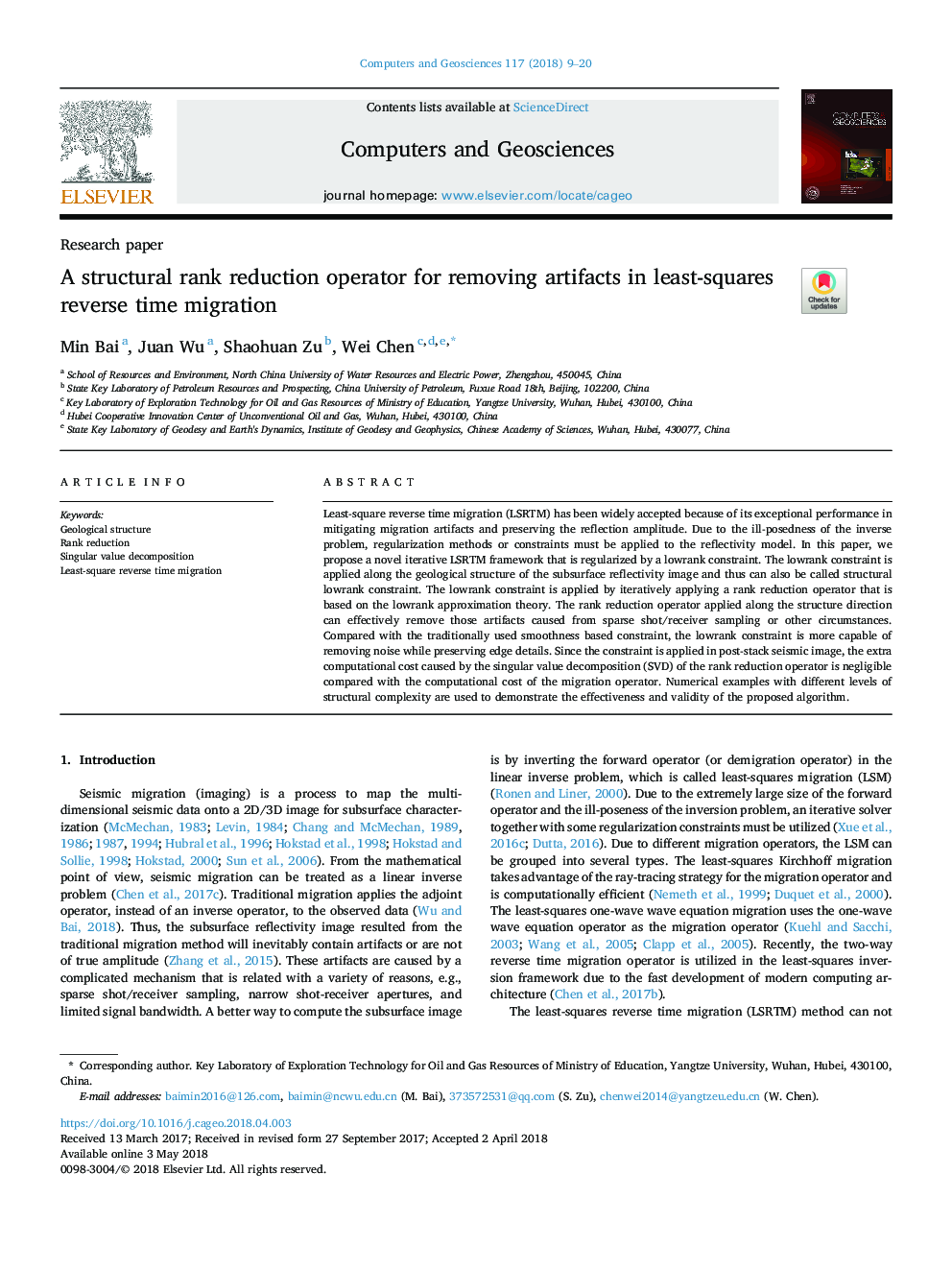| Article ID | Journal | Published Year | Pages | File Type |
|---|---|---|---|---|
| 6922091 | Computers & Geosciences | 2018 | 12 Pages |
Abstract
Least-square reverse time migration (LSRTM) has been widely accepted because of its exceptional performance in mitigating migration artifacts and preserving the reflection amplitude. Due to the ill-posedness of the inverse problem, regularization methods or constraints must be applied to the reflectivity model. In this paper, we propose a novel iterative LSRTM framework that is regularized by a lowrank constraint. The lowrank constraint is applied along the geological structure of the subsurface reflectivity image and thus can also be called structural lowrank constraint. The lowrank constraint is applied by iteratively applying a rank reduction operator that is based on the lowrank approximation theory. The rank reduction operator applied along the structure direction can effectively remove those artifacts caused from sparse shot/receiver sampling or other circumstances. Compared with the traditionally used smoothness based constraint, the lowrank constraint is more capable of removing noise while preserving edge details. Since the constraint is applied in post-stack seismic image, the extra computational cost caused by the singular value decomposition (SVD) of the rank reduction operator is negligible compared with the computational cost of the migration operator. Numerical examples with different levels of structural complexity are used to demonstrate the effectiveness and validity of the proposed algorithm.
Related Topics
Physical Sciences and Engineering
Computer Science
Computer Science Applications
Authors
Min Bai, Juan Wu, Shaohuan Zu, Wei Chen,
